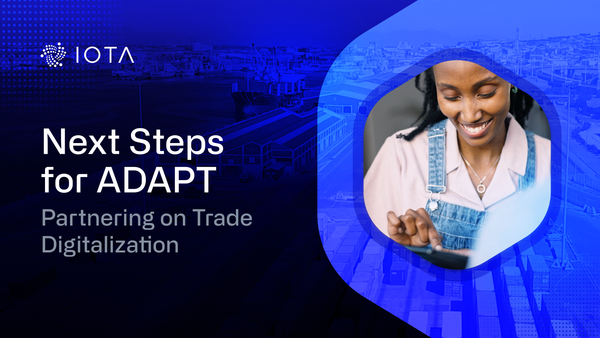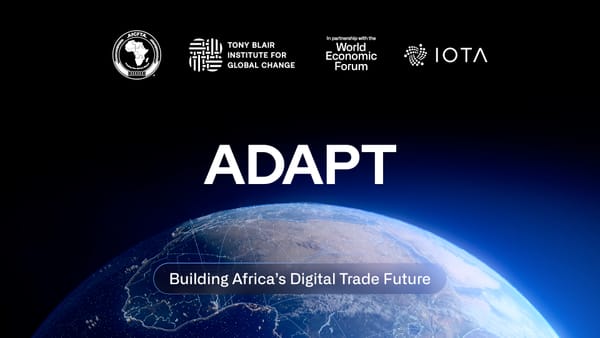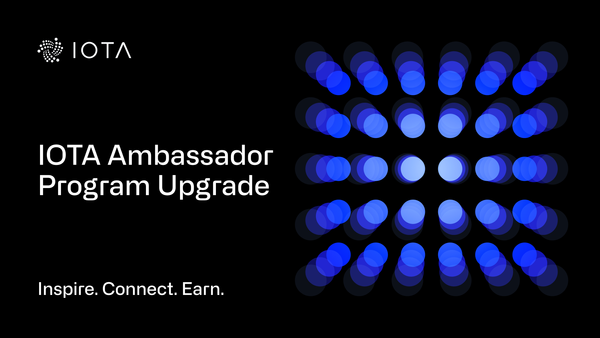Introducing TWIN
The Future of Supply Chains is Built on IOTA
TL;DR:
Powered by IOTA, TWIN is a scalable infrastructure for decentralized digital trade across industries and regions. It empowers small businesses in low- and middle-income countries by enabling access to trade digitization, overcoming barriers, and supporting sustainability and compliance. With several projects already using it and features like Self-Sovereign Identity, Dataspaces, and Digital Product Passports, TWIN is set to transform global trade.
We recently shared news about the launch of the TWIN Foundation: a collaboration between leading organizations to steer the Trade Worldwide Information Network, powered by IOTA.
But what is TWIN?
In a nutshell it’s a next-generation digital infrastructure designed to bring real-time, verifiable data sharing to global supply chains. It already serves as the foundation for several projects, including the African-trade-focused TLIP.
Built on IOTA’s decentralized tech, TWIN is driving a new standard of transparency, trust, and efficiency in international trade.
TWIN: Expanding Beyond TLIP with IOTA
You may already be familiar with TLIP: TWIN uses similar technologies, principles, and APIs. However, taking advantage of the Rebased upgrade of the IOTA protocol, TWIN goes much further by embracing decentralization and tokenization, aligning with emerging standards for Dataspaces like Gaia-X, and enabling advanced IOTA solutions such as Self-Sovereign Identity and Digital Product Passports. These transformative capabilities, which were in an early stage in TLIP, establish TWIN as revolutionary open infrastructure for modernizing trade ecosystems globally.
This formal distinction clarifies the roles of TWIN and TLIP:
- TLIP focuses on improving trade processes in East Africa, integrating TWIN technology for regional impact while achieving interoperability with global ecosystems.
- TWIN is the core open-source technology for TLIP and other digital trade ecosystems, enabling scalable, decentralized, and interoperable ecosystems.
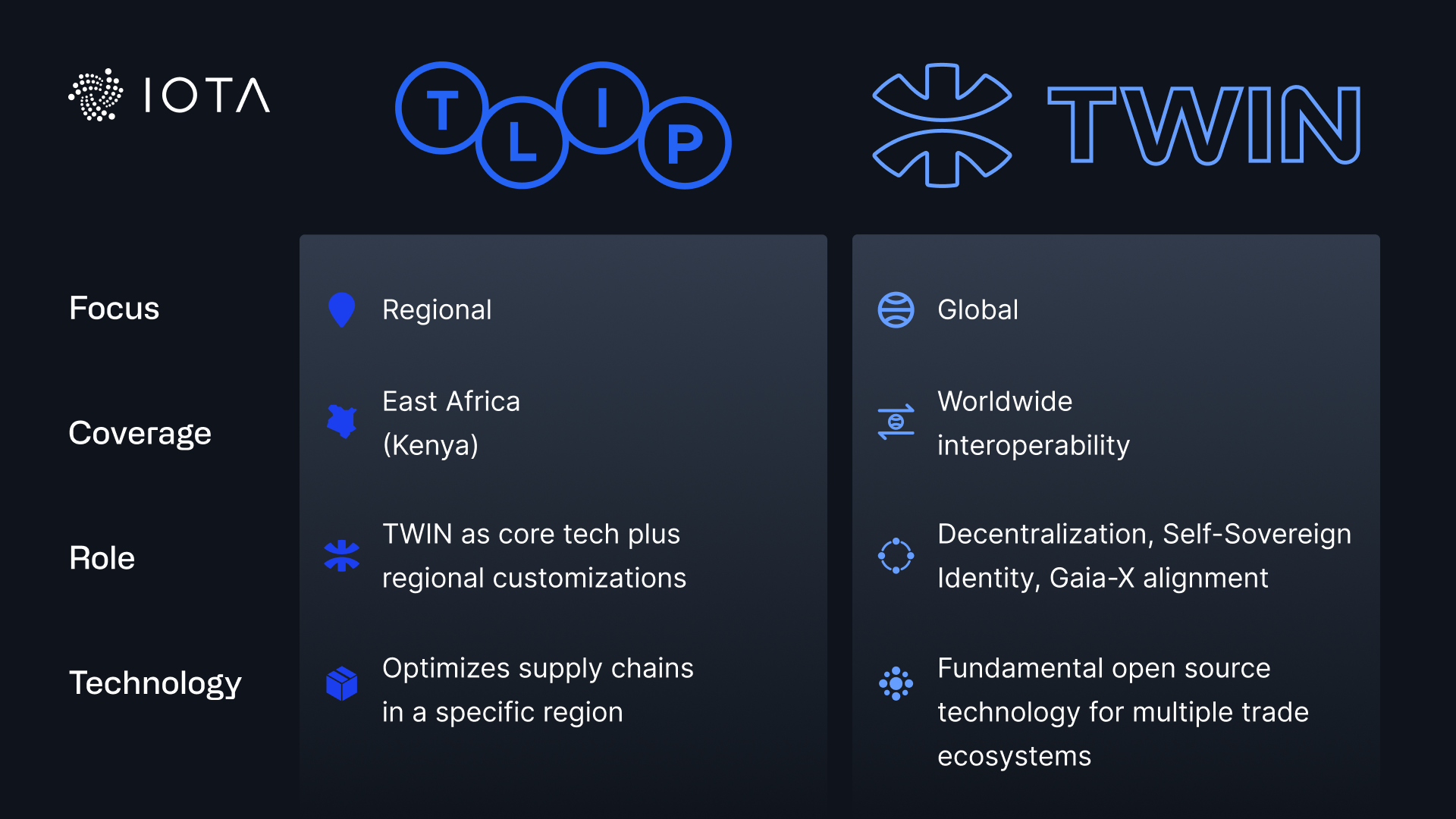
Partners in TWIN
In early 2024, an agreement to collaborate on TWIN was signed at the 13th Ministerial Conference of the World Trade Organization. At this event, the IOTA Foundation and TradeMark Africa joined forces with the World Economic Forum, the Tony Blair Institute for Global Change, the Global Alliance of Trade Facilitation, and the Chartered Institute of Export & International Trade to advance a shared vision of establishing a neutral governance and open technology framework for digital trade.
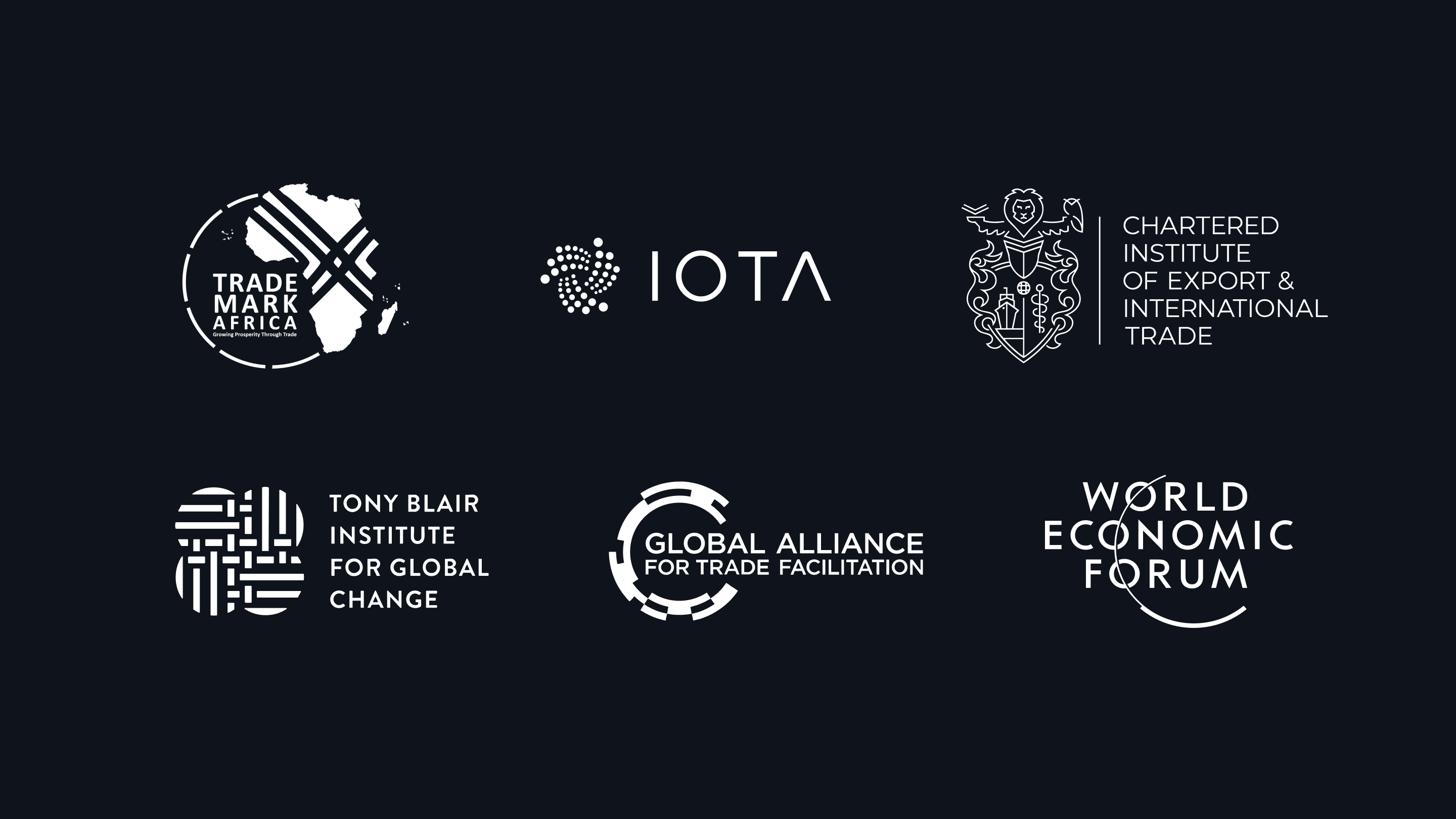
This collaboration underscores TWIN’s significance as a global enabler of trade innovation.
How TWIN Works
TWIN enables the creation of tailored trade and supply chain ecosystems that adapt to diverse business needs, as we’ll see in the next section. By digitizing processes and embracing open standards, TWIN ensures interoperability, scalability, and traceability, helping industries collaborate efficiently within global trade networks. The following are some of the tech features that enable this:
Open Modular Infrastructure: Designed with open APIs and aligned with global standards like Gaia-X and IDSA, TWIN integrates IOTA’s Distributed Ledger Technology for secure, scalable data exchange. Its modular approach prevents vendor lock-in, ensuring organizations can innovate and scale while staying compliant with global trade and supply chain requirements.
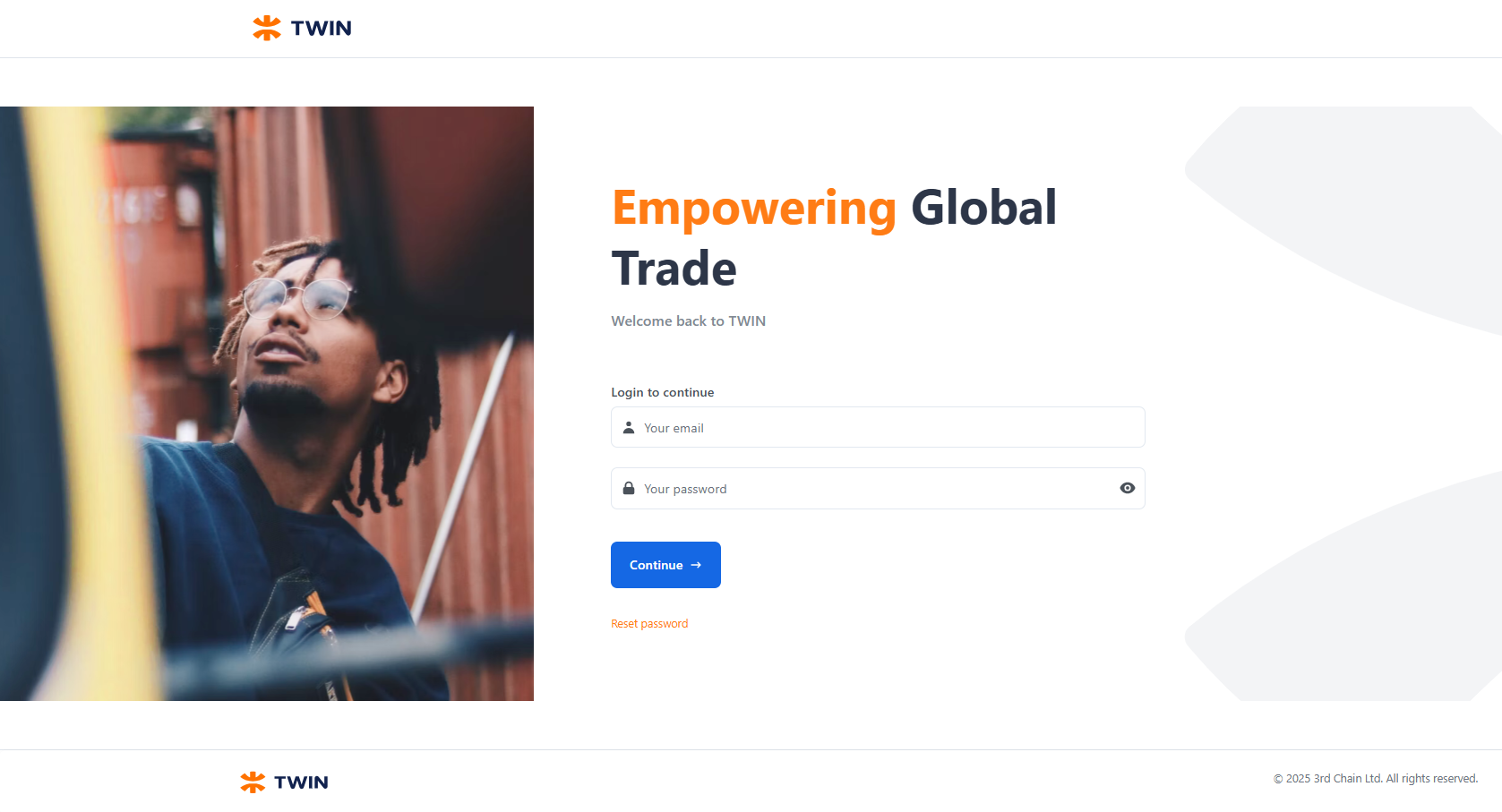
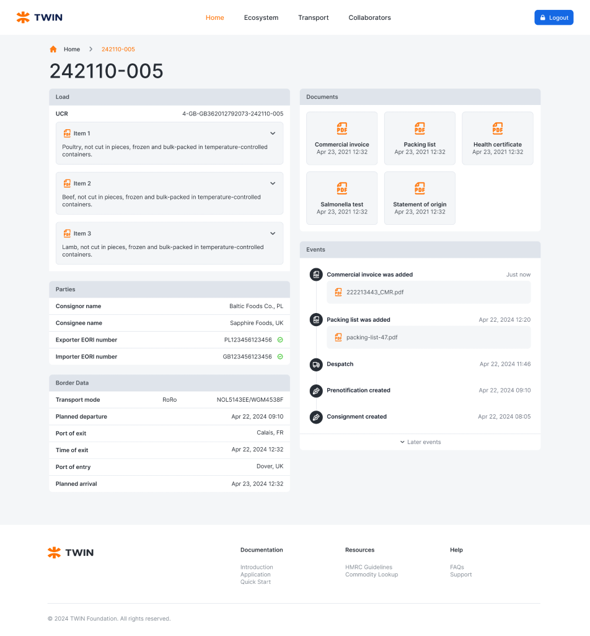
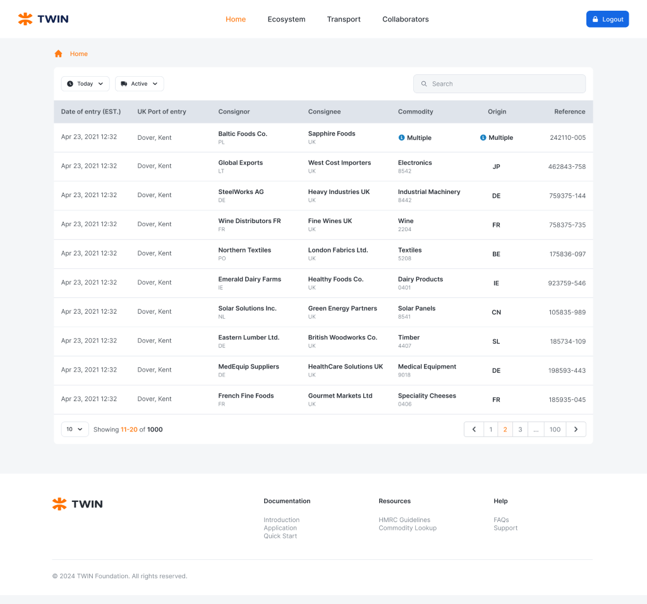
The TWIN Frontend
DLT for Trust and Transparency: TWIN uses IOTA’s Distributed Ledger Technology to create a secure, transparent registry that supports smart contracts, decentralized identity, and credential verification. Key services like the TWIN Catalog, Registry, and Clearing House ensure compliance of participants and services, while events and changes are immutably recorded, enabling data integrity, auditability, document tokenization, and luxury goods authentication.
TWIN Nodes – Backbone of the Ecosystem: TWIN Nodes connect participants and their services, enabling secure data exchange and seamless interaction across the ecosystem. Each participant controls not only their data but also their assets via a personal ledger account, with optional node assistance for sponsored transactions, while validator nodes maintain network security and earn fees.
Secure and Decentralized Data Exchange: The TWIN Data Space Connector enables secure, policy-based data sharing through REST endpoints while preserving data sovereignty. The TWIN Catalog helps participants discover data and services, while the DLT records auditable events and proofs of data integrity, allowing independent verification and trusted collaboration.
Trust and Compliance Through the TWIN Trust Framework: The TWIN Trust Framework governs identity, privacy, and compliance using Decentralized Identifiers and W3C Verifiable Credentials. Trust Anchors attest to participant attributes, while smart contracts enforce rules and compliance. Compliance Credentials are revocable and maintained on the DLT to ensure trust and accountability.
Innovation and Openness Through Open Source: Like IOTA, TWIN is open source to promote innovation, transparency, and global adoption while preventing monopolistic control over critical trade infrastructure. Organizations can integrate TWIN flexibly into their operations, enabling open and proprietary models to coexist.
TWIN Ecosystem and Real-World Applications
What truly sets TWIN apart is its decentralized, multi-system capability. Thanks to the technology, shared standards, and Trust Framework listed above, trade ecosystems built on TWIN aren’t siloed; they can communicate seamlessly with each other. The result is a globally connected network of trade ecosystems – enabling more collaboration, innovation, and efficiency.
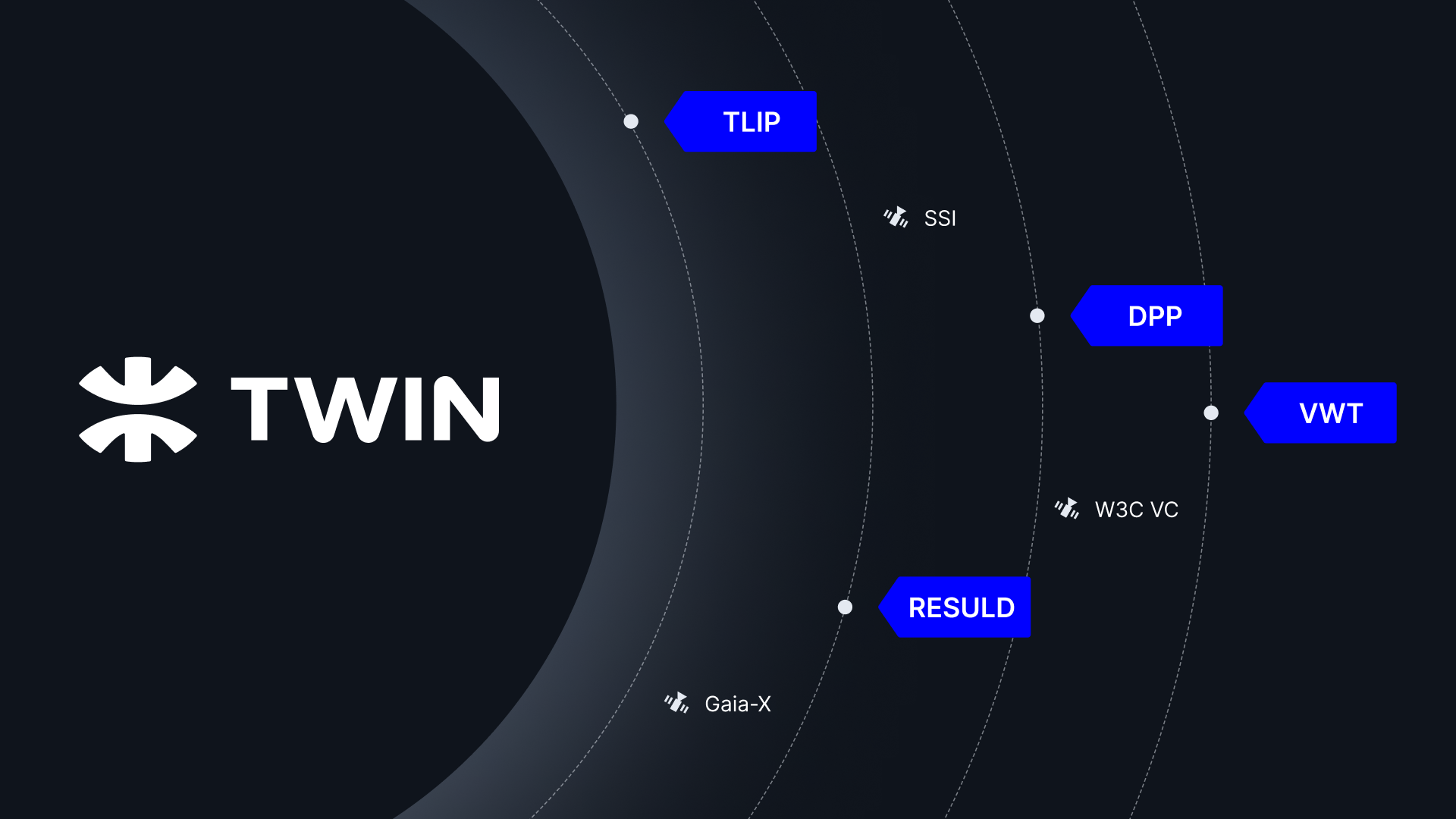
Beyond TLIP, TWIN’s transformative potential is evident in several high-profile projects:
UK Cabinet Office Border Trade Demonstrations: Rebranded under TWIN, this initiative showcased improved UK-EU border operations, tracking over 900 poultry consignments from Poland to the UK in 2024-2025. By providing real-time data insights, TWIN enhanced visibility, planning, and collaboration across borders. Read our blog post here.
RESULD: RESULD focuses on fresh produce supply chains between Kenya, the Netherlands, and the UK, digitizing operations to reduce disruptions, enhance product quality, and uphold ESG standards. Led by a consortium headed by the Rotterdam School of Management and Docklab, a technology lab and venture studio based in the Port of Rotterdam, RESULD highlights TWIN’s transformative potential. Read TLIP’s blog post about RESULD here.
Virtual Watch Tower: The VWT initiative connects monitoring hubs through digital middleware powered by TWIN. This decentralized approach improves oversight and operational efficiency, showcasing TWIN’s adaptability across industries. Learn more about VWT in this webinar:
Conclusion: Pioneering Connected Trade
TWIN represents the next stage in digital trade infrastructure, taking the lessons learned from TLIP and expanding them with the advanced potential of IOTA technology. By integrating decentralization, interoperability, and alignment with global standards, TWIN is positioned to revolutionize how data and value are exchanged across industries and borders.
Contact our Product Adoption Team at [email protected] to learn more about this project and to explore commercial opportunities.
For the IOTA Foundation, TWIN is a significant step toward realizing the vision of bringing real-world infrastructure on-chain, creating a shared, open-source foundation for secure, efficient, and globally connected trade ecosystems. Watch this space for upcoming developments!


